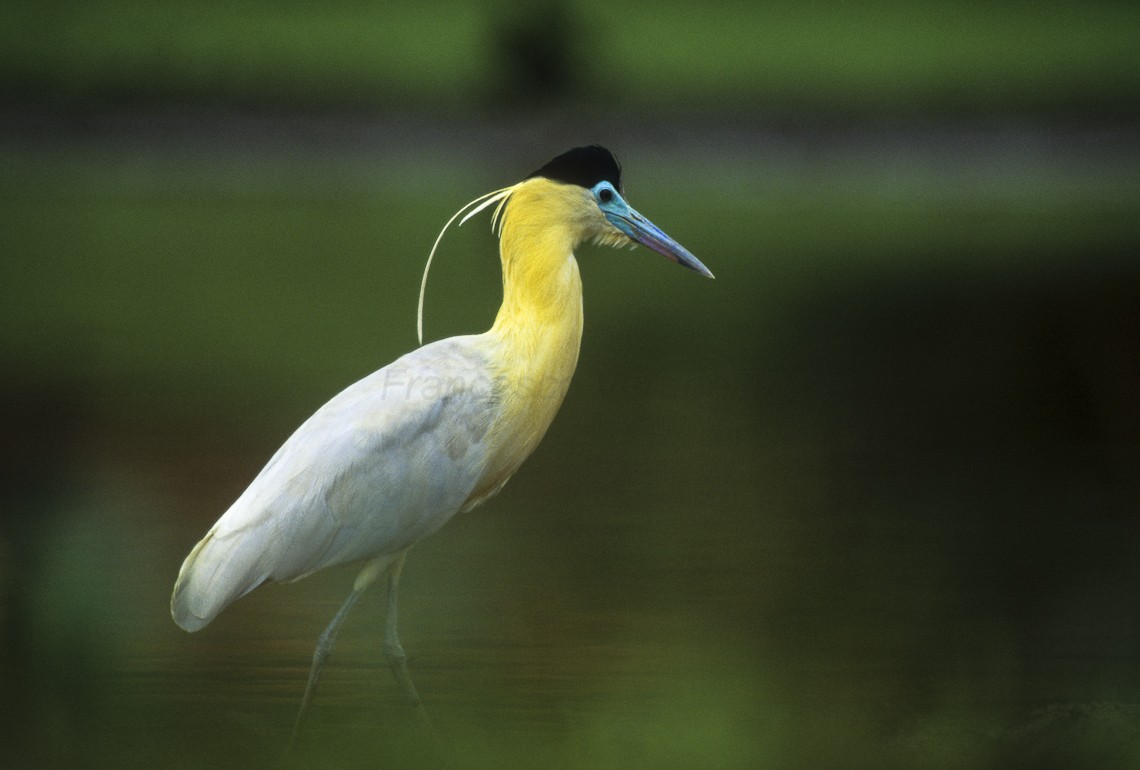Capped Heron
A species of Capped heron Scientific name : Pilherodius pileatus Genus : Capped heron
Capped Heron, A species of Capped heron
Botanical name: Pilherodius pileatus
Genus: Capped heron
Content
Description General Info
 Photo By Francesco Veronesi , used under CC-BY-SA-2.0 /Cropped and compressed from original
Photo By Francesco Veronesi , used under CC-BY-SA-2.0 /Cropped and compressed from original Description
This species is very distinct from other herons, being the only one with a blue beak and face, and a black crown. The belly, chest, and neck are covered with yellowish-white or light-cream feathers. The wings and back are covered with white feathers. Three to four white long feathers extend from the black crown. No sexual dimorphism in color or brightness has been noted. The body length of an adult varies between 510 and 590 mm, the wing chords between 263 and 280 mm, the tail between 95 and 103 mm, and the tarsus between 92 and 99 mm. The weight of an adult varies between 444 and 632 g. The juveniles are very similar to the adults. They only differ in body length and that the white feathers are slightly grey. 
Size
61 cm
Nest Placement
Tree
Feeding Habits
Capped Heron, primarily piscivorous, consumes fish, aquatic insects, frogs, and tadpoles, utilizing specialized hunting techniques at the water's edge, often during twilight. Exhibits unique adaptations for stealth and wading to capture aquatic prey.
Habitat
The capped Heron is primarily found in wetland habitats within tropical regions, encompassing edges of savanna grasslands, ditches, ponds, streams, and flooded areas with varying vegetation. This species is adept at foraging in both open and vegetated waters, and it has adapted to human-modified landscapes including agricultural trenches and rice fields.
Dite type
Piscivorous
General Info
Feeding Habits
Bird food type
Behavior
The capped heron is normally solitary, although there are cases where they have been found in couples or groups. Birds may be seen with other species such as snowy egrets (Egretta thula) and scarlet ibis (Eudocimus ruber), however other studies have found that they avoid large mixed-species flocks, appearing in fewer than 1% of 145 observed feeding aggregations. Capped herons appear to be submissive to great egrets (Ardea alba), but dominant to snowy egrets (Egretta thula) and striated herons (Butorides striatus). 
Distribution Area
The capped heron is endemic to the neotropics and almost exclusive to the Amazonian rainforest. It is present in Bolivia, Brazil, Colombia, Ecuador, French Guiana, Panama, Paraguay, Peru, Suriname, and Venezuela. It inhabits low lands up to 900 m above sea level, though in Venezuela it is only found below 500 m, and in Ecuador below 400 m. Although there are no migrations registered to this species and it is believed that is sedentary, there may be seasonal movements in Darien, Panama. 
Species Status
This species has an extremely large range, and hence does not approach the thresholds for a Vulnerable rating under the range-size criterion. The population size has not been quantified, and the trend is not known, but it is not believed to approach the thresholds for Vulnerable under the population size or trend criteria. For these reasons the species is evaluated as Least Concern. Nevertheless, it occurs in very low densities and is considered "rare" in Ecuador, Colombia, Venezuela, and Panama. The capped heron appears to be adaptable and may be expanding its use of man-made habitats. People have found some individuals in pools along the Transamazonian Highway Brasil. However, given that it is mainly a riverine forest species, the loss of this habitat due to logging and conversion of forest to pasture might pose long-term threats. 
Scientific Classification
Phylum
Chordates Class
Birds Order
Pelicans and Relatives Family
Herons Genus
Capped heron Species
Capped Heron